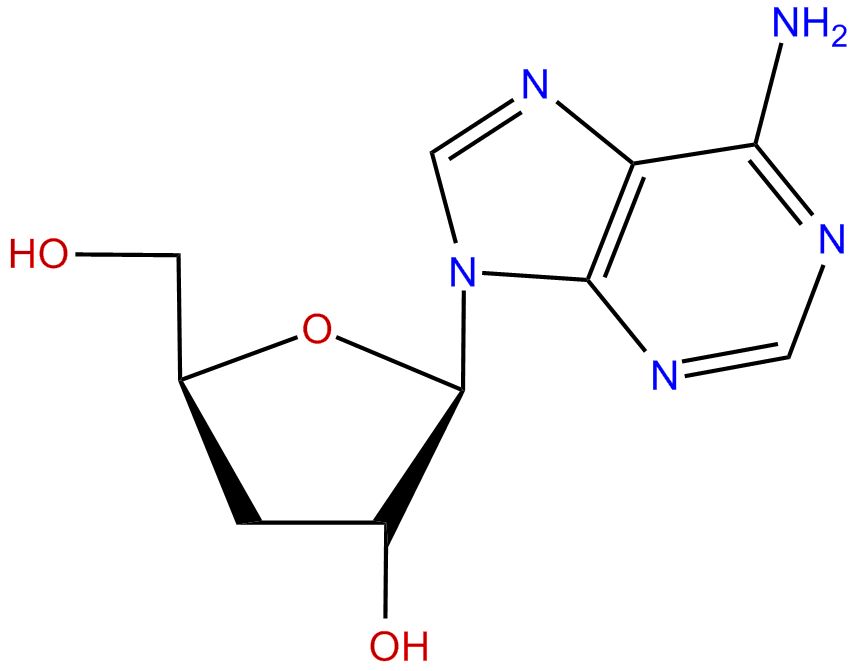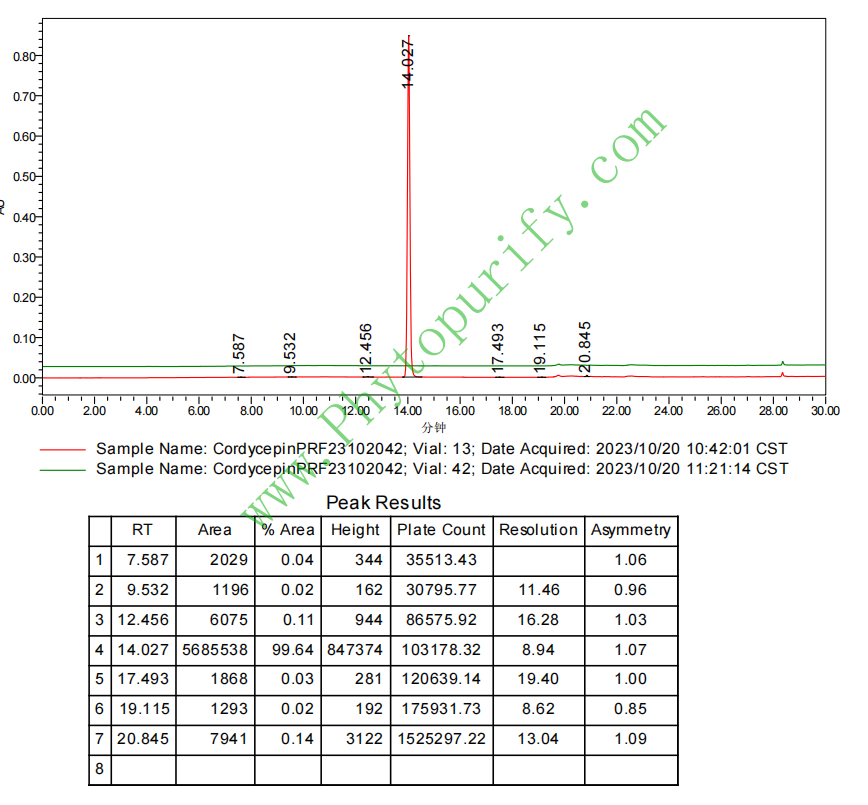Cordycepin Descrtption
Synonym name: 3'-Deoxyadenosine, 9CI,8CI; 9-Cordyceposidoadenosine; Adenine cordyceposide; Cordycepine
Catalogue No.: BP0392
Cas No.: 73-03-0
Formula: C10H13N5O3
Mol Weight: 251.246
Botanical Source: Cordyceps militaris
Purity: 95%~99%
Analysis Method: HPLC-DAD or/and HPLC-ELSD
Identification Method: Mass, NMR
Packing: Brown vial or HDPE plastic bottle
Can be supplied from milligrams to grams, up to kilograms.
GMP is available on request.
Inquire for bulk scale.
The Cordycepin can be supplied in kilograms scale for API, Nutrition and Dietary Supplement, except supplied for R&D.
The price is very competitive, please contact for detail.
Profile:
Cordycepin
A purine nucleoside antimetabolite and antibiotic isolated from the fungus Cordyceps militaris with potential antineoplastic activity. Cordycepin is an adenosine analogue, which is readily phosphorylated to its mono-, di-, and triphosphate intracellularly. Triphosphate cordycepin can be incorporated into RNA, and inhibits transcription elongation and RNA synthesis due to the absence of a hydroxyl moiety at the 3' position. Because it can be converted to an inactive metabolite by adenosine deaminase, this agent must be administered with an adenosine deaminase inhibitor in order to be effective. Cordycepin has displayed cytotoxicity against some leukemic cell lines in vitro. Check for active clinical trials using this agent. (NCI Thesaurus).
References:
1, Pharmacological and therapeutic potential of Cordyceps with special reference to Cordycepin
3 Biotech February 2014, Volume 4, Issue 1, pp 1–12
Abstract
An entomopathogenic fungus, Cordyceps sp. has been known to have numerous pharmacological and therapeutic implications, especially, in terms of human health making it a suitable candidate for ethno-pharmacological use. Main constituent of the extract derived from this fungus comprises a novel bio-metabolite called as Cordycepin (3′deoxyadenosine) which has a very potent anti-cancer, anti-oxidant and anti-inflammatory activities. The current review discusses about the broad spectrum potential of Cordycepin including biological and pharmacological actions in immunological, hepatic, renal, cardiovascular systems as well as an anti-cancer agent. The article also reviews the current efforts to delineate the mechanism of action of Cordycepin in various bio-molecular processes. The study will certainly draw the attention of scientific community to improve the bioactivity and production of Cordycepin for its commercial use in pharmacological and medical fields.
2, Anticancer and antimetastatic effects of cordycepin, an active component of Cordyceps sinensis
Journal of Pharmacological Sciences Volume 127, Issue 1, January 2015, Pages 53–56
Abstract
Cordyceps sinensis, a fungus that parasitizes on the larva of Lepidoptera, has been used as a valued traditional Chinese medicine. We investigated the effects of water extracts of Cordyceps sinensis (WECS), and particularly focused on its anticancer and antimetastatic actions. Based on in vitro studies, we report that WECS showed an anticancer action, and this action was antagonized by an adenosine A3 receptor antagonist. Moreover, this anticancer action of WECS was promoted by an adenosine deaminase inhibitor. These results suggest that one of the components of WECS with an anticancer action might be an adenosine or its derivatives. Therefore, we focused on cordycepin (3′-deoxyadenosine) as one of the active ingredients of WECS. According to our experiments, cordycepin showed an anticancer effect through the stimulation of adenosine A3 receptor, followed by glycogen synthase kinase (GSK)-3β activation and cyclin D1 suppression. Cordycepin also showed an antimetastatic action through inhibiting platelet aggregation induced by cancer cells and suppressing the invasiveness of cancer cells via inhibiting the activity of matrix metalloproteinase (MMP)-2 and MMP-9, and accelerating the secretion of tissue inhibitor of metalloproteinase (TIMP)-1 and TIMP-2 from cancer cells. In conclusion, cordycepin, an active component of WECS, might be a candidate anticancer and antimetastatic agent.
HPLC of Cordycepin



